Moving to Svalbard is an enticing thought for many, but the reality can be a real challenge. Let's take a detailed look at what living on Svalbard in the High Arctic is really like.
One of the world’s northernmost inhabited areas, much of Svalbard is true wilderness. The functional town Longyearbyen is surrounded by freezing fjords, glaciers and frozen tundra, and it attracts people with a true sense of adventure.
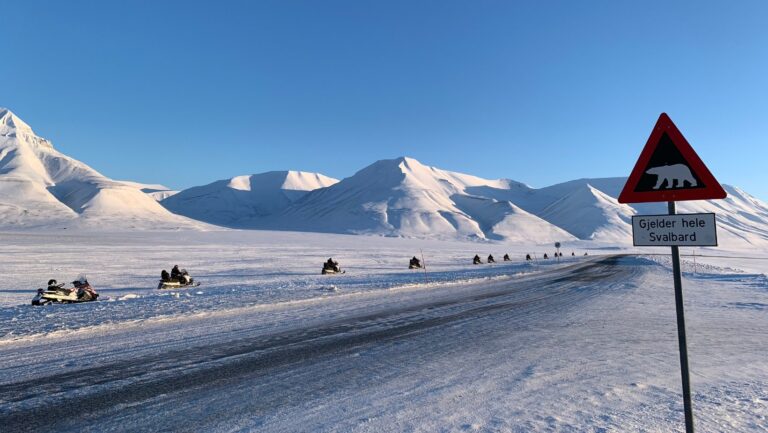
Perhaps then it's no surprise that over the last few years I've had several readers contact me about moving to Svalbard. I understand the appeal! I have long been fascinated by the remote archipelago.
Once I started to focus my publishing business on Norway, I knew I had to visit. I've now been to Svalbard three times, once in the darkness of winter, once when the sun returned, and once in the summer.
Table of Contents
Living in the High Arctic
On all three visits I had my journalist hat on and spoke to many people who live and work in Svalbard. Some of those people have since moved on, but their advice remains useful.
I've also pulled together a lot of information provided by the Governor of Svalbard and the Community Council in Longyearbyen, all of which is essential to know if you are even considering a move here.
That's because there are considerable challenges to life in such a remote area. But before we move on to that, let's take stock of where exactly we're talking about.
An Introduction to Svalbard
Svalbard, a group of islands in the High Arctic, represents one of the world’s northernmost inhabited areas. Human life is concentrated in just a handful of settlements on the biggest island, Spitsbergen.
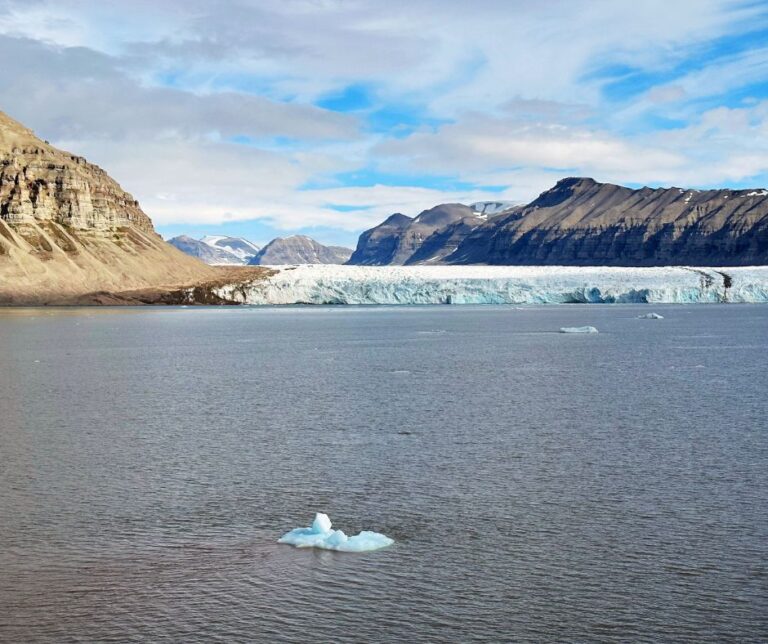
This remote wilderness of icy fjords, glaciers, and frozen tundra, is a place for true adventurers, but there are major challenges, not least the climate. Summer brings continuous sunlight, while winter is dark, with frequent snowstorms and avalanches.
Another unique aspect of Svalbard life is its polar bears, which are close enough to necessitate keeping doors unlocked for emergency shelter. People are required to carry a firearm when venturing outside Longyearbyen.
Governed under the Svalbard Treaty, the islands enjoy commercial rights extended to 46 signatory nations, with Norway appointing a Governor who acts as Chief of Police. Svalbard is a visa-free zone, but self-sufficiency is key due to limited job opportunities, and living here doesn't count towards residence in Norway.
It's good to understand the history of Svalbard, which defines much of everyday life today. Although whaling and sealing are distant memories, and coal mining has now all but ceased, all the previous industries have left their mark on Svalbard.
Today, the archipelago's economy is driven by a combination of science and research, and tourism. Most people moving to Svalbard will fall into one of these two categories.
Challenges of Life in Svalbard
The biggest challenge faced by anyone living on Svalbard is adjusting to the harsh climate.
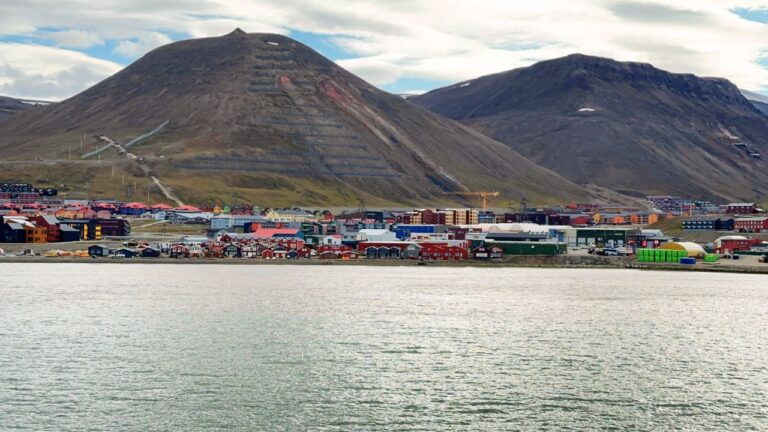
While summers can be mild and snow-free, they come with permanent sunlight for months. In contrast, winters are permanently dark with snowstorms and avalanches common problems.
As a resident on Svalbard you are merely a guest of the islands' true citizens: polar bears. Although they do not commonly roam the streets of Longyearbyen, they do come close and many residents leave their doors unlocked to allow anyone to quickly get to safety.
Unless you are visiting as part of an organised tour, it is a requirement to carry a firearm – and to know how to use it – whenever leaving Longyearbyen. That's quite different from the rest of Norway!
Why Does Norway Govern Svalbard?
The first thing to understand is how Svalbard is governed. The islands are part of Norway but are covered by the Svalbard Treaty, which gives equal rights to engage in commercial activities to the 46 signatories.
The Norwegian Government appoints a Governor who also acts as Chief of Police. This role performed by this office of more than 30 people encompasses various responsibilities including overseeing rescue services, environmental issues, firearm licenses, and residency matters.
The governance of Svalbard, therefore, combines Norwegian authority within an international framework, making it a distinctive geopolitical entity.
How to Move to Svalbard
Technically, it's easy to move to Svalbard. That's because the archipelago is an entirely visa-free zone and you do not need a residence permit to live on Svalbard. But the reality is quite different.
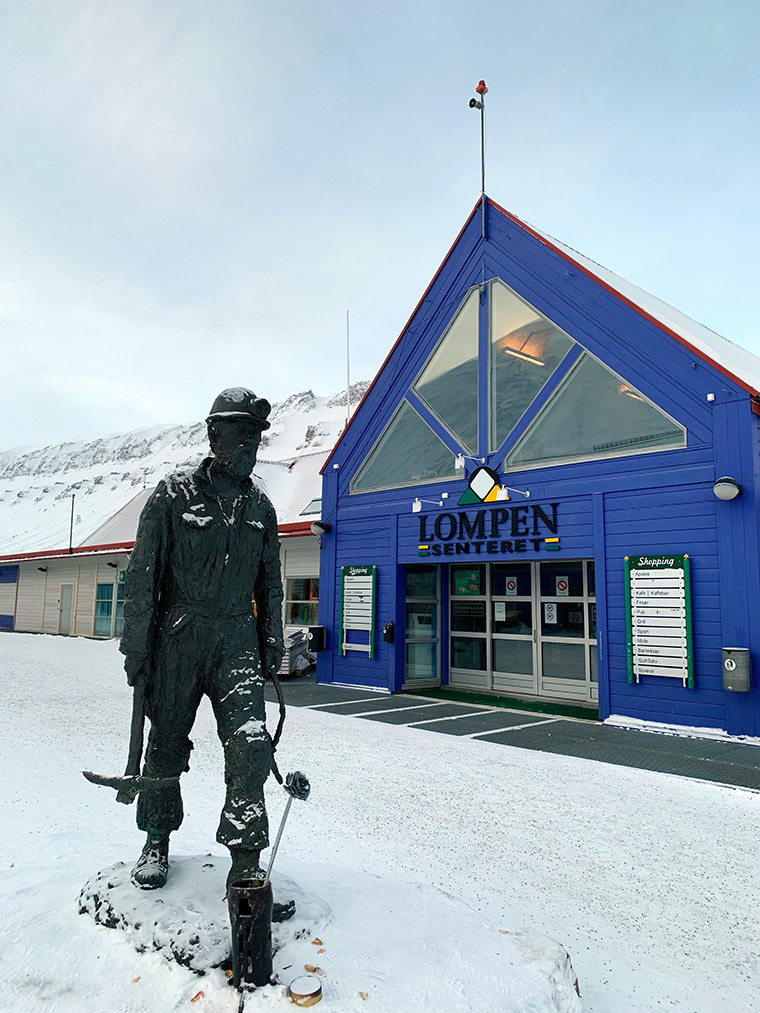
The remote nature of the islands and limited employment opportunities mean that unless you have a job offer, you must be able to support yourself with your own funds.
It's also important to understand that time spent living in Svalbard does not count towards residence in Norway. That means that if you've lived in Svalbard for two years, those two years will not count towards a permanent residence application in Norway.
Longyearbyen: The Northernmost Capital
As the biggest settlement on the archipelago, Longyearbyen is where the majority of residents of Svalbard live, work and play.
Approximately 2,000 people live in the town, although the population fluctuates because of the large student population and the seasonal nature of tourism.
Longyearbyen Lokalstyre (Community Council) operates the school, kindergarten, cultural centre, cinema, sports hall, gallery, library, youth club, fire service, and the energy company.
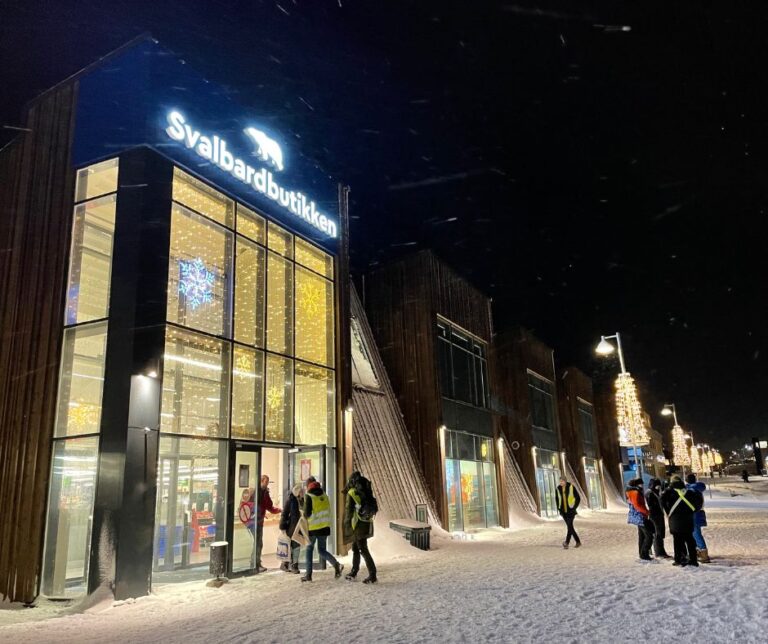
It is also responsible for roads, water, waste management, sewerage and town planning. The Council is elected every four years.
Science and Research in Svalbard
Students and researchers make up a big proportion of Longyearbyen's population these days. The University Centre in Svalbard (UNIS) has become a global centre for Arctic research.
UNIS specialises in Arctic Biology, Arctic Geology, Arctic Geophysics and Arctic Technology. Everyone studying on Svalbard also takes training in Arctic safety at the UNIS Arctic Safety Centre.
Almost 750 students are based at UNIS, of which approximately 50% are affiliated with other Norwegian universities. The remainder are from international universities, with 43 countries represented.
Elsewhere on the arhcipelago, scientists from 11 countries are based at the Ny-Ålesund research centre.
Employment and Tax on Svalbard
Employment opportunities in Longyearbyen are limited, especially since the recent closure of most mining activities. Major employers include the Governor's Office, the Community Council, the University Centre in Svalbard, the school, and of course the tourism industry.
It is worth checking the job listings from the Norwegian Labour and Welfare Administration (NAV) or contacting the above employers directly. Employment is always offered on a contract basis.
As a general rule, income tax on Svalbard is much lower than on the Norwegian mainland. It's just 8% for the majority of income, although very high earners do pay more. However, this tax saving is offset by a much higher cost of living.
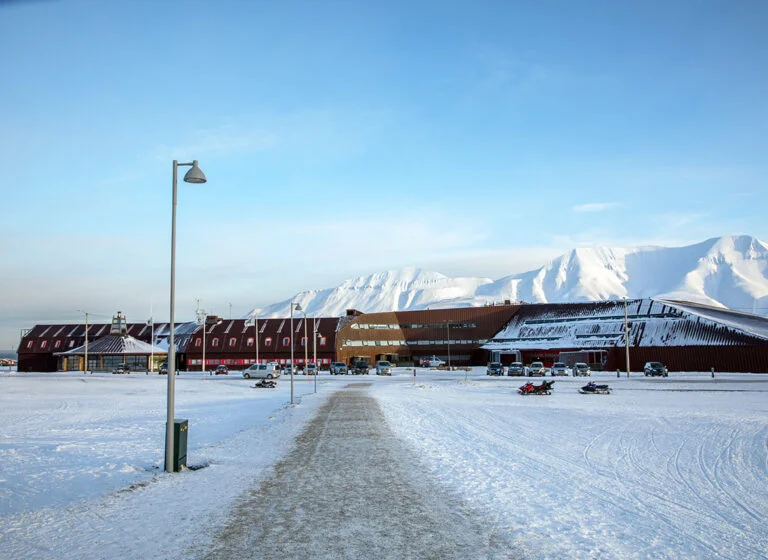
Foreign citizens working for a Norwegian employer become members of the Norwegian National Insurance scheme just as if they worked in Oslo. An additional contribution of 7.9% is payable.
It's critical to fully understand these rules especially if you are a European citizen, as the EEA Agreement does not apply in Svalbard. This means certain benefits accrued here cannot be transferred to other EEA-countries. However, as a member of the Norwegian social security scheme, pension benefits are accrued.
If in any doubt, consult with an immigration lawyer in Norway, preferably one that specialises in Svalbard matters.
Starting your own business in Svalbard is possible. However, you must contact the Governors Office and Community Council in advance to understand the requirements, as they differ from mainland Norway.
Family Services & Healthcare on Svalbard
The school teaches lessons in English and Norwegian through to upper secondary level. There is also a kindergarten for children aged 1-5.
The community council's child and family welfare service provides support and assistance to children, young people and families who are having a difficult time at home.
Longyearbyen has a hospital staffed by professionals including GPs, nurses, a surgeon, dentist, physiotherapist and more. Stays are free for residents of the Nordic countries and for anyone covered by the Norwegian National Insurance scheme.
Everyone else will need comprehensive private insurance, or will need to pay for treatment. This will not be cheap!
Housing in Longyearbyen
Like what you read so far? Well, hold your horses, because there's a major hurdle to leap over first. Finding a house—or more realistically a room—is a big barrier.
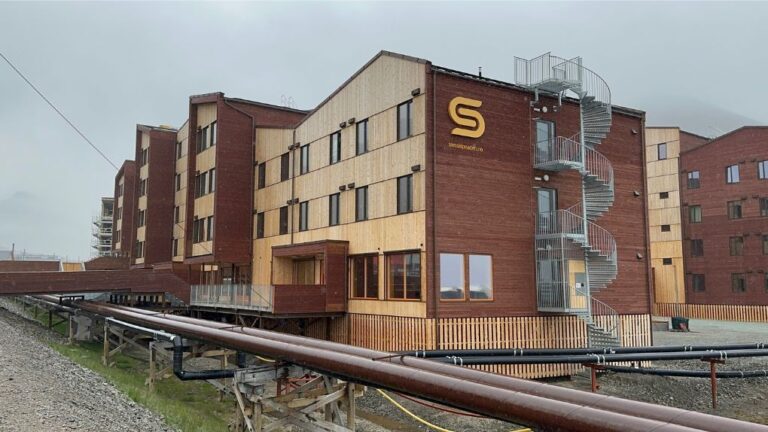
Longyearbyen is a former mining town. As such, the majority of accommodation was built for mine workers and people providing services to them. Nowadays, the vast majority of homes are owned by the mine company, the local government (for their employees), or the university.
Very little private accommodation exists. What little there is gets rented very quickly, and often at eye-waveringly high rates. When I visited earlier this year, I spoke to people who had to share rooms or even sleep in storage rooms for weeks until accommodation became available.
The recent opening of large new UNIS student accommodation blocks has relieved the pressure on the private market to a certain extent. However, finding a place to live in Svalbard remains the biggest hurdle to moving there for most people.
Leisure Services in Longyearbyen
For such a small, remote community, there is a surprising amount going on in Svalbard, much of it managed by the Community Council.
For example, the modern kulturhus (Culture House) opened in 2010 and plays host to a cinema that shows more than 100 movies every year. It also houses a sizeable library, and a popular cafe.
Touring bands also appear from time to time in Longyearbyen! I was surprised to learn during my research that of Norway's best-known rock bands, Motorpsycho, had a gig planned.
Another key leisure facility is Svalbardhallen, where swimming, squash and gym training are all made possible.
A wide range of sports and social clubs operate throughout the year, covering such interests as ice hockey, photography, model planes, sailing, Irish dancing, and loads more.
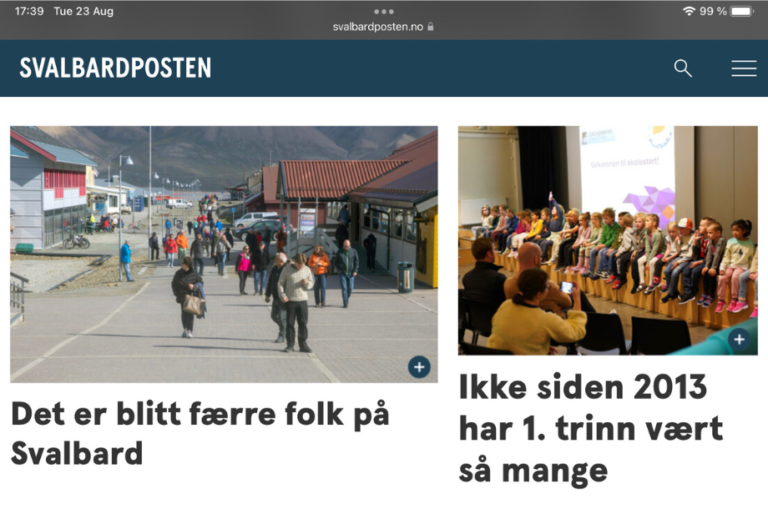
The local newspaper Svalbardposten is produced weekly, with some articles in English. A print version in magazine format is available from the main store and select other outlets, while the online subscription remains popular with former residents.
Shopping in Svalbard
Many shops in Longyearbyen cater to tourists. Svalbardbutikken, part of the Coop chain, is definitely one for the locals.
Groceries, kitchen equipment, fresh foods, cosmetics and alcohol are all available and the store is open daily. As with mainland Norway, the alcohol store has shorter hours and is closed on Sundays.
Groceries are more expensive than on the mainland, with fresh foods particularly pricey. Although alcohol is sold duty-free, residents of Svalbard are subject to a quota system.
This system limits the amount of alcohol they can buy within any given month. Despite this, there are concerns from local politicans about the amount of alcohol consumed.
The Future of Svalbard
A 2016 white paper from the Norwegian government emphasised that Longyearbyen should be an attractive place for Norwegian families. There should be good and secure jobs provided, preferably many small businesses, and it will no longer be a company town.
The closure of most coal mining activity has raised questions about the viability of the community going forward. But investment does continue.
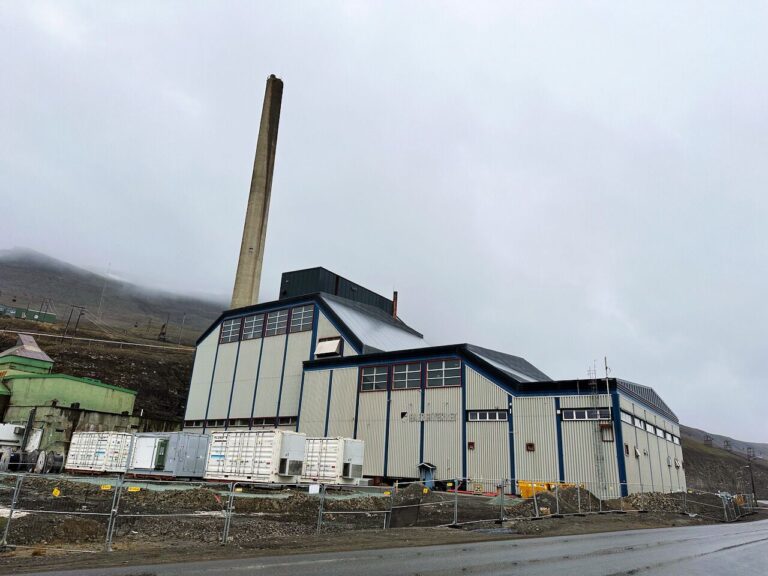
Most recently, Norway announced the closure of the coal-fired power plant in Longyearbyen. Diesel generators will be used as an interim solution until a fully sustainable system can be put into place.
Perhaps some of the answer for Svalbard lies in carefully planned, sustainable tourism. However, sustainable is the key word. Recently, the Norwegian government announced plans for a stricter regulation of the tour guide industry.
Interviews with Svalbard residents
Over the years, I have interviewed several people who call Svalbard their home for my podcast, the Life in Norway Show. Some of these people have since moved on, but the interviews remain essential listening for anyone interested in life on the archipelago. Here they are:
Ep. 62: Life as a Researcher on Svalbard: Peter Betlem from the University Centre in Svalbard talks about the challenges of life on the archipelago and about working as a research scientist. Listen here.
Ep. 25: Growing Food on Svalbard: When I visited in 2019, I spoke to Ben Vidmar who worked as a chef. He also had his own business aiming to solve one of the biggest headaches of life at 78 degrees north: obtaining fresh food while reducing waste. Listen here.
Ep. 23: Adventure Tourism in Svalbard: Long-term Longyearbyen resident and tour guide Anna Lena Ekeblad talked adventure tourism in Svalbard on a scenic drive around the settlement. Listen here.
FAQ: Frequently Asked Questions about Living on Svalbard
As you can see from the comments, many people from all over the world research life on the archipelago. How serious everyone is, I can’t say. But they sure do have plenty of questions.
Now, while I have never lived on the islands, I have visited there and know several people who live there. So, I’m doing my best to answer as many of them as possible right here.
How do I get a job on Svalbard?
This is detailed in the main article, above. Try Nav, the local newspaper, and Facebook groups about Svalbard. If you are a scientist or a student, try the University Centre UNIS.
Can you find me a job on Svalbard?
No, sorry. This page contains everything I know about living and working on Svalbard, so I'm not able to provide any further help or advice.
How do I travel to Svalbard?
Realistically, air travel is the only way to get to Svalbard. Regular scheduled flights are available from Oslo and Tromsø on the Norwegian mainland. Flights are not cheap, and given the popularity in tourism, they should be booked as far in advance as possible. Cruise ships do visit Svalbard but there is no regularly scheduled passenger ferry service from Norway.
Do I need a visa to visit Svalbard?
No. There are no restrictions on entering Svalbard. However, as almost all air traffic comes via Norway, you may need a visa to enter or transit through Norway.
Do I need a visa to live in Svalbard?
As detailed in the article above, anyone is free to move to Longyearbyen. However, you must be able to prove an income as there is little in the way of state welfare. Starting a business is fairly straightforward, but bear in mind it’s hard to find accommodation without employer assistance. Also see the above answer regarding transiting through Norway.
What languages are spoken in Svalbard?
On my three visits to Spitsbergen, I have heard every language imaginable. Norwegian is the official language of the administration in Longyearbyen, but English is a close second. There are many people living in Longyearbyen who speak no Norwegian. Given the Russian settlements on Svalbard, there are also several Russian speakers.
How expensive is life on Svalbard?
The archipelago is extremely remote, so everything must be flown or shipped in. This means items that may be low priced elsewhere can be surprisingly expensive. Fresh food and vegetables are particularly pricey in relation to mainland Norway. Also bear in mind that given the present housing shortage, rental accommodation is much more expensive than in Norway.

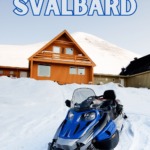

Hello! I’m Norwegian citizen living in UK. My wife have Indian passsport and she have EEA visa to stay with me in UK, do my wife need visa to travel with me to Norway?
Hello, she will need a Schengen Visa, Uk didn’t signed a Schengen Treaty
Not for Svalbard but for everywhere else in Norway, yes.
No, the article said you do not need any identification to live in svalbard
Living in Svalbard is a belt thighting situation & condition compare to the mainland of Norway. I am Jorey Terencio from Philippines, I am a graduate of Practical Nursing & a Professional Caregiver & i finished already my study on Basic Norsk. I am very willing & very interested to work in Svalbard as healthcare provider wherein i can use my Education, Training, knowledge & skills which is very needed to take care sick people & elderly. I would like to inquire how to apply a job in Svalbard & how can i get a job contract. Hoping to hear a good reply from you.
Sincerely
Jorey Terencio
Are you still interested to live and work in Svalbard?
Is there a worker contract?
I am interested to move and to live in Svalbard
what is the first step and how I and my family can be applied to live and to work in svalbard with a legal entery to Norway
thank you
Hello, my name is Aleksandar, I am from Serbia. I am pro basketball coach and I owned my private coffee. My wife is experienced nurse, so we would love to move and work on Svalbard. Is there anyone who can help?
Go to Finn.no , I’m sure you will find the help you’re looking for.
Hi, I’m looking for work on the island,someone can tell me a site where I can look for a job?
I’m from Rome Italy and I would like to move to the island. Thanks.
Hi, my business is online so am location independent and have no need of further employment. i am a british citizen from the UK currently residing in the tropics. i would like info on types of long term housing available and costs please?
Most housing is company owned and there is very little in the way of a private market. For example, on Norway’s biggest property marketplaces there are currently no properties available to sale or for rent.
Thanks.
Hello,
I am a Deaf American looking for a way out of the United States. I have done my research, and it appears that Svalbard is the easiest region to relocate to. However, I have a few questions regarding the Svalbard island. What are prices of housing or apartment rentals there? What are Deaf rights like over there? Is there a job for someone like me, maybe in government offices or in a school? I have employment experience in Deaf education, and a degree in International Studies.
Price of housing isn’t the issue (but they are expensive) so much as availability. Most property is company owned and private rental availability is rare. You have to appreciate that Longyearbyen is little more than a big village, albeit one with more public services than you would expect given that there isn’t a nearby city that offers them. Although there are jobs in Longyearbyen, I think you’ll find it very hard to find employment without an intermediate level of Norwegian, at the very least. However, you can of course try and all the information you need to get started is in the article above. I would suggest reading some of the articles in the local newspaper to get a feel for what life on Svalbard day-to-day is really like.
Are there any bars and hotels there as I would like to visit for a week
Absolutely! We have it here. 🙂
Haha
Hi, i am having an indian passport so do i need schenegen visa for the transit from Oslo or not..?
Hi Harry,
As per Norwegian Embassy Delhi , Indians must have C type Visa (Tourist Visa upto 90 days) to be in Oslo Norway (with that you may also travel in Norway or to other Schengen areas) and to Longyearbyen /Svalbard nobody needs any visa or permit. I believe , other people from rest countries need the visa to Oslo too (Exception – Norwegian citizens, EU citizens and other citizens like UK , US citizens etc. , who do not need visa to Schengen areas .
All the best !
Hello,
I checked the official site (governor’s) but still wonder when I can take my cat with me to Svalbard. Could you please tell me when you know ?
Thanks for reading me
No, cats aren’t allowed on the islands
OHHH wow I didn’t even think cats of neutered or spayed would not be allowed as if they are fixed and indoor only they can’t over run anything. Well that decided that then as my 2 babies are basically little dogs and adventure with me everywhere. Well that was easy decision then lol
Absolutely no cat allowed there.
As in ABSOLUTELY NOT
I visited Svalbard in August of 2018, landing in Longyearbyen and then taking a boat to Barentsburg and trekking back to Longyearbyen. I was utterly fascinated by Svalbard as it is like no place I have ever been…truly the edge of the world. On the boat to Barentsburg, I met a Russian man from Saint Petersburg who was there for the summer working as a tour guide. A seasonal job like this appeals to me and I am wondering how one finds themself working in such a position. Thanks for reading.
Hello Ben…
I’m indian and I have a indian passport.I want to go Svalbard and live there…please tell me all process….and tell me the ticket rate of flight of Svalbard from Norway….or the rate of ship ticket….Norway to Svalbard ..
Hi is there black people living in svalbard?
Have seen one before. But not anymore at the moment.
Lol, what question is that??
Good place for visit in summer
Accommodation cost? B&B.
I would like to stay with a family for a month perhaps 3.
Starting in November 2019
hi please anybody can advice me how to find a job in svalbard im working as a chef or sous chef any kitchen or restaurant job no problem thank you
Hello am Emendack from Africa I came across this country Svalbard I really wish to visit as a tourist do I need a visa? and what are their immigration policy to enter as a tourist
Svalbard is not a country and Africa is a continent.
All of the answers to your question are listed above!
I really doubt that a person from Cameroon needs you to explain to them that Africa is a continent.
Hello am Emendack from Africa Cameroon I came across this country Svalbard I really wish to visit as a tourist do I need a visa? and what are their immigration policy to enter as a tourist
hi im from north of iraq , do i need a visa to travel to svalbard ?
Hello I am Moroccan. Can I go to Svalbard with a Moroccan passport and live there and work there?
without visa??
Hello, Farhan. I’m from Iraq, Sulaymaniyah, and the Norwegian authorities do not require a visa for entry to Svalbard, but if you have a visa requirement to enter Norway/the Schengen area, you must have a visa if you travel via Norway/the Schengen Area on your way to or from Svalbard.
Hello am a Nigerian and I planned to move to svalbard and try to get a job there too,but as a Nigerian with my nigerian passport do I need to apply for a visa or not?
1st, you can’t “move to Svalbard and try to get a job there”. As iddylic this place sounds to be, it’s not a normal place where you just wander around to find a job. It’s not a migrant friendly zone (I’m not saying this in a negative way) since it’s remote, expensive and with few accomodations. And services aren’t free if you don’t have comprehensive insurance or are employed by a Norwegian employer and pay for Norwegian National Insurance Scheme.
You won’t be able to sustain yourself there nor survive in arctic weather without being prepared and employed first, this needs to be clear.
2nd, read the article, it has been written for a reason. You don’t need visa to enter/live on the Svalbard but since you’ll minimaly transit through Norway, you’ll need one to enter there.
I also want to know if blacks people living in svalbard or they don’t allow them because am from Nigeria.
They allow everyone
Are you trying to start an argument? Who cares what color you are. Why are you asking if you can’t live there because you’re from Nigeria? If you read about Svalbard and living there instead of making this about race, you would see you don’t just go live there. Geeze grow up
I’m to establish a highest quality classical music festival in Svalbard. Know this kind as a hard boiled pro. and have some idea about Svlabarad, like the mines. Willing to settle down there with wy Russian/Jewish wife. Who would the people to contact? Please contact me at my e-mail.
Great article, thanks. Like many others, I find Svalbard fascinating. I think it should be made very clear to readers that residence in Svalbard is not a pathway to residence in the EU. The Norwegian government has made that abundantly clear. I note that you did say that residence on Svalbard does not count as residence in Norway but I’d spell it out even more clearly.
Hello sir/madam,
May you please let me know if I am eligible to move to Svalbard or not with my Nepali passport? Many websites say that I can but how do I get the transit permission or the visa of Oslo, Norway as many told it requires? Do I really need to have visa of mainland Norway to get to Svalbard and to settle there?
As a nepali citizen you don’t need transit visa of norway.. As long as you have plenty of resource to move here u are always welcome here.. Before boarding on the flight u need to know there are limited employment opportunities available here as many are taken by Russian or Norwegian speaking people.. But u can find plenty of works with low pay on government offices….
hei, i am from Iran and if i may want to live in Svalbard, how can i apply for that ?
Well , I am from Trondhiem too 🙂 and I travel n working now in Oppdal, I think it will be Svalbard for me in 2 weeks 😅
I wonder if this possible but since there is limited housing and accommodation, I would like to come over a build affordable units on vacant land and rent/sell them to interested parties
Great
Hello. I am from Australia and I believe Svalbard and Australia have a residency programme that allows Australians to enter and live in those countries while still able to claim the same pension as they did while living in Australia and not be a burden upon those countries. Any information about this would be appreciated as i think it would classify as an income and therefore be able to contribute to the Svalbard community.
I have seriously been thinking about moving to Svalbard and building a house to live in and also some Units for rental ( no idea on those rules and regulations) but would like any information possible about building permits ect.
Regards from a keen Australian.
Holy moly :). Reading through the posts here it seems that people did not read the blog post thoroughly, or maybe just did not understand it? The one and only city on Svalbard is small, very small, you can criss-cross it in a day multiple times, by foot, on unpaved roads. Finding accommodation, a job, building a house? How ambitious! I’d recommend to visit the place first for at least two times as a tourist, once in winter and once in summer, ideally for several weeks each, before even thinking about moving to Svalbard permanently. It is a very expensive, very very expensive place to live. Building a house – I’d say this is next to impossible. Renting a house (not just a flat) – I hope your funds are amazing, especially when you’d like to live in the ‘Hollywood’ part of Longyearbyen, and you’re not afraid of avalanches. I understand that Svalbard is a dream location to many. I love that place, in my case for the adventures I’ve experienced there. But moving there, for good? Very tough decision to make.
hi, i am a uk citizen with my wife who is a greek national (we have 3 kids). We would like to move to svalbard. I work remotely so do everything online. Is it possible than we move to svalbard? what is the cost of a 3 bed property to rent per month?
The town has a population of 2,000 – there are very few (often none) properties to rent on the private market, and usually then only bedsits or “spare rooms”. Most property comes in connection with jobs. You can find what little is available on finn.no or svalbardposten.no
Many of the questions in the comments are already answered in the article – grrrr!
The upshot is the main source of funding for the entire town was mining, and that’s moved out. The only other revenue stream that I can tell from the article is tourism, but the transition from mining to tourist town is in its infancy… and might be a hard sell to many tourists who would prefer a white sunny beach.
It’s a matter of balance. Everything that is imported needs an equal value exported to pay for it. Agriculture for local food’s out. Maybe fishing?
I hate to say it, but without something to pay for its imports, one wonders how long Svalbard will survive.
there is more than one town in svalbard, in fact there are 8 towns , 3 more if we include jan mayen as part of svalbard and jan mayen Barentsburg,Grumant ,Hiorthhamn,Longyearbyen,Ny-Ålesund,Pyramiden,Sveagruva,Nybyen,Flyplassen Terminal/Toll,Olonkinbyen, and Puppebu
Only Barentsberg could realistically be defined as a town, and even then there are just a few hundred people there. A couple of them are settlements at best, Nybyen is part of Longyearbyen, and “Flyplassen Terminal/Toll” is the airport, not a town.
sorry got information off wikipedia for jan mayen so sorry and what do you mean by settlement
how’s the internet connection there? I work from home so finding a work there is not a problem for me, I just want peace and to experience to live in the arctic 🙂 and when everything goes back to normal, planning to move. How expensive it is in USD in 2021, like say for example renting an apartment, food stuff like that, some range would do. thank you very much!
Housing is difficult to find. It mostly is arranged by an employer. The internet speed is one of the fastes in the world.
Many people here ask questions which are clearly answered in this article. Just read the article first before you comment please.
Why are cats prohibited on svalbard?and what about dogs?
I wondered the same thing if the cat is spayed or neutered and cannot overpopulated then what is the big deal.
Bad for wildlife. As they are everywhere.
Just curious about the internet facilities there.
Would we face issues with internet connection of phone connection in Svalbard especially during polar nights?
Why do a lot of people would want to work and find home in Svalbard? i mean it is indeed a beautiful place, but i am just curious it seems a lot of expats want to find an employment there and possibly seek residency? what’s the catch?
if you visit her you’ll know why
despite its cold weather and lack of resouces it is characterized by its stunning scenery and tranquility that you will not find anywhere in this world except svalbard and greenland
I don’t think they will get ‘residency’ well they will in terms they are aowed to live there but not residency for Norway. I think for US and Europeans it is just a way of life they want to live in nature. I think for other 3rd world countries ppl wrongly believe it’s a way into Norway or Europe if they stay there first which as stated in the article it is NOT and can’t be used as a ‘gateway’ for access to Europe. So I think those are 2 different reasons depending on where ppl are from for why they want to go there
Can I build my own house in Svalbard? Do I have to buy land first?
No. You can’t buy land.
Read the article!
NOOO can people read. You don’t own land there you rent it so you could rent land and get a mortgage but you will never own the land
A penal colony with polar bears. No thanks.
Great article
There is a wonderful YouTube series about living on Svalbard. It shows a young couple building their dream house out of a small weekend cottage
15 min drive outside of town.
Cecilia Blomdahl.
It took time to wait for a cabin to buy, then more time to build it.
It was expensive, and a lot of work, but it’s gorgeous now.
Provides step by step instructions on how to do it.
My question would be…
Are there waiting lists for apartments there. Could you go on that list and then wait it out where you are until one comes up?
Hi . I wish to settle in Svalbard. I have masters degree in law from UK. Can I find a job in Svalbard. What are my chances to get employment? Is there chance to arrive and search for job. Hope vegetarian food is not a problem.
hello. I have a master’s in nursing from Belgium and I want to settle in Svalbard. What are my chances to find a job as a nurse or as a head nurse there? My English is decent but I can’t speak Norwegian I’m willing to take courses.
Great article, thank you very much for the information. I am an Australian citizen and looking to live elsewhere. I am thinking very seriously about moving to Svalbard. Housing appears to be a big problem and I would like to move there with the aim of establishing a business to provide short and long term housing to address the shortfall. I would be interested in your thoughts on this, and who/where I should begin my inquiries.
Lucky people always at the other end of the world…LOL…LOL